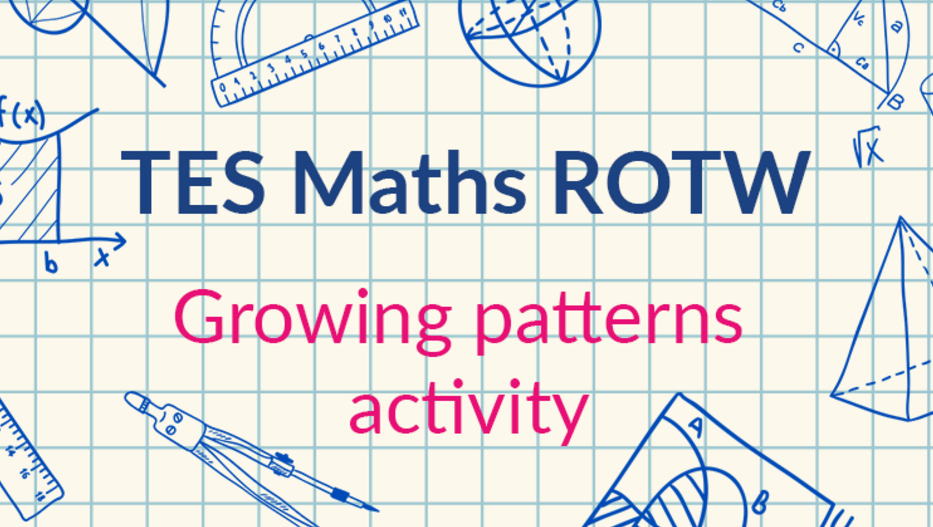To see all of the work I do for TES Maths, including Resource of the Week, Inspect the Spec, Maths Newsletters and Topic Collections, please visit the TES Maths Blog here
What is it?
I have long been an advocate of exploring sequences through geometric patterns, as opposed to just relying on numerical or algebraic representations. Looking at how shapes grow can help students gain a deeper understanding of the underlying rule of a sequence, enabling them to make predictions and generalisations in a way that merely looking at an nth term algebraic rule does not allow. As such, I am a huge fan of the website Visiaul Patterns (http://www.visualpatterns.org/), which contains more patterns that you could ever need. But this amazing resource takes it to a whole new level. For each pattern students are presented with a geometric representation, an nth term, a table of numbers and a graph. Having filled out as much information as they can, they are then challenged to look where the numbers in the nth term formula appear in each of the representations. It is this linking together of different areas of mathematics, spotting connections and beginning to understand why these connections exist, that will give students the depth of understanding they need.
How can it be used?
The activity is fully resourced and really well structured. The author suggests running it as a group activity with each member of the group being given a different pattern to work on, before sharing their finding and seeking help where needed from the rest of the group. This seems like an excellent structure to me. As I often say, I would be tempted to have Desmos on hand. In my experience there are not many students who make the link between straight lines graphs and sequences, and this activity really has the potential to solidify that connection, and the ability to instantly generate graphs will come in useful. Finally, there is always the option of giving students a blank card and asking them to create their own patterns, or giving them just one piece of information (the graph, for example), and asking them, to fill in the rest of the card. Excellent stuff!
Thanks so much for sharing
Craig Barton
Download Representing Growing Patterns
View the author’s other resources

This resource looks great but I think the link is broken:
Download Representing Growing Patterns